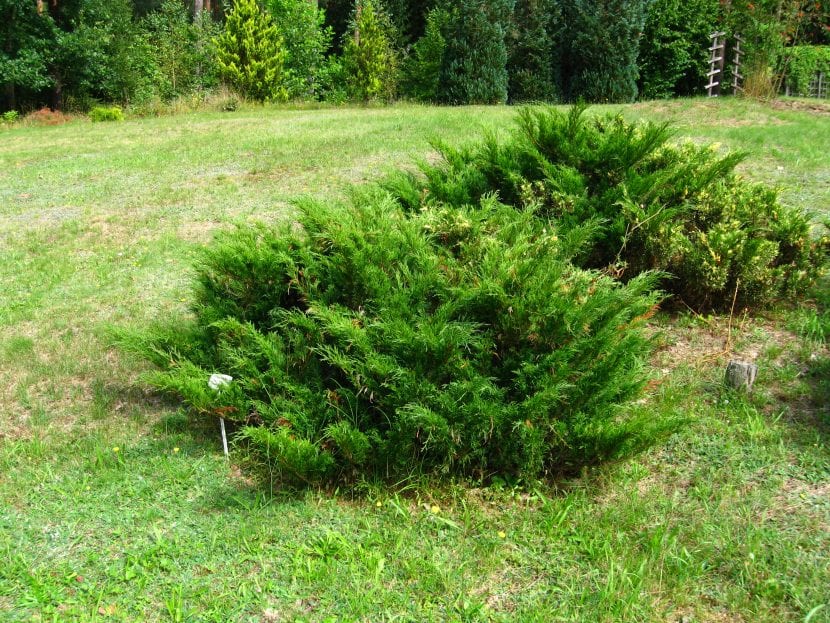
Image - Wikimedia / Athantor
El Juniperus sabina It is a wonderful conifer, perfect to finish filling those empty spaces in the garden or to define paths; It can even be grown in pots! In addition, it is very interesting to know that its maintenance is really simple, since it tolerates pruning and frost.
Its ornamental value is very high, so much so that it is a species that can be acquired young without problems, since it is one of those plants whose shape and color combine very well with the environment.
Origin and characteristics
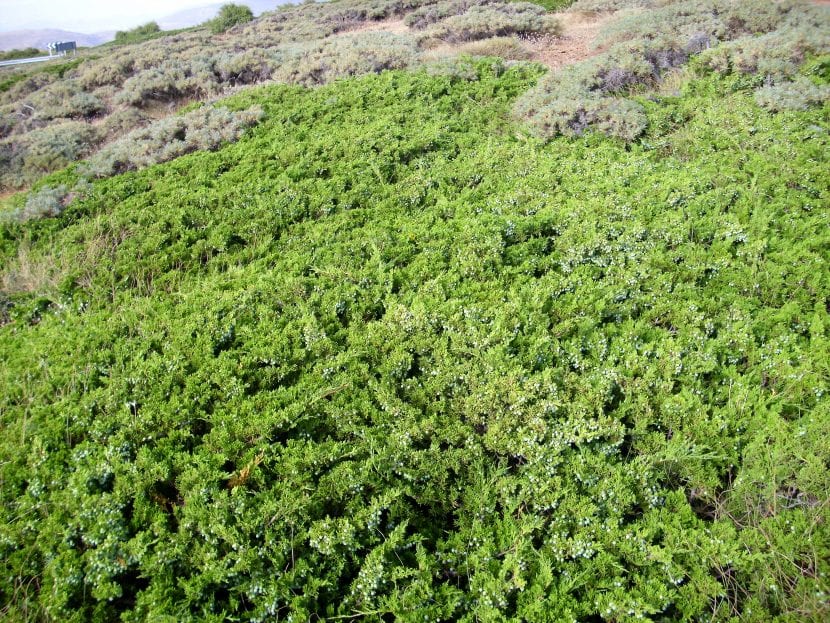
Known as creeping juniper, this is a conifer that grows naturally in central and southern Europe, western Asia, and Algeria, on mountain peaks at altitudes between 900 and 2750 masl along with the Scots pine, gall oaks and / or sabina albar among other plants. In Spain we will see it in the Iberian Peninsula, specifically in the eastern half and in the Cantabrian Mountains.
Reaches a height of 1 to 2 metersAlthough the wind blows strongly and frequently in the area, it does not rise much from the ground. Its branches grow horizontally, perhaps somewhat erect but little, and have a reddish-brown or ashy bark. The leaves are evergreen - they stay on the plant for several months before falling - and they are squamiform, green in color. It blooms from late summer to spring, and produces fruits that are cones.
What are their cares?
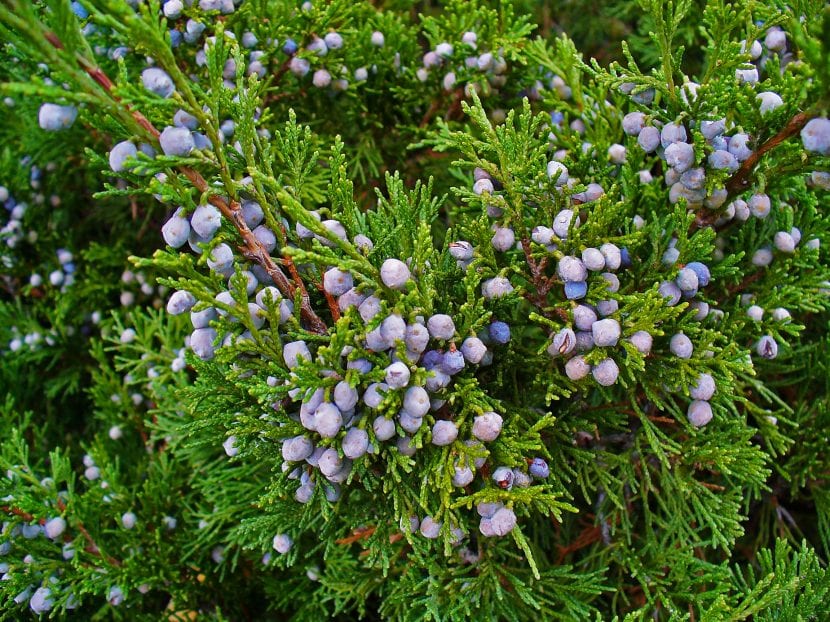
Image - Wikimedia / Athantor
If you want to have a copy, we recommend you take care of it as follows:
Location
The creeping juniper is a plant that has to be always outsidebut where exactly? It tolerates sun exposure well, although if you live in an area of low altitude, where the insolation is intense (like the one in the Mediterranean for example) it will be better in semi-shade.
Earth
It depends on where you are going to have it:
- Flower pot: with a good universal growing substrate (like this one that you can get here) it will be OK.
- Garden: grows in limestone soils, and does not care if there are also a lot of stones.
Irrigation
The watering of this plant is something that must be controlled very well, since does not resist waterlogging but even less drought. For this reason, it is important to use substrates or plant it in soils that are capable of absorbing water quickly, but it is also necessary to water it only when necessary.
I know, it seems that I have not told you anything with that, but it is so 🙂. Besides, you must bear in mind that each climate is different: if, for example, you live in an area where it rains regularly, irrigation will be scarce; On the contrary, if the drought is a problem that is repeated year after year and that lasts for weeks or months, then you will have to water often.
To avoid problems, check the humidity of the soil before proceeding to waterEither with a thin wooden stick or a digital moisture meter.
Subscriber
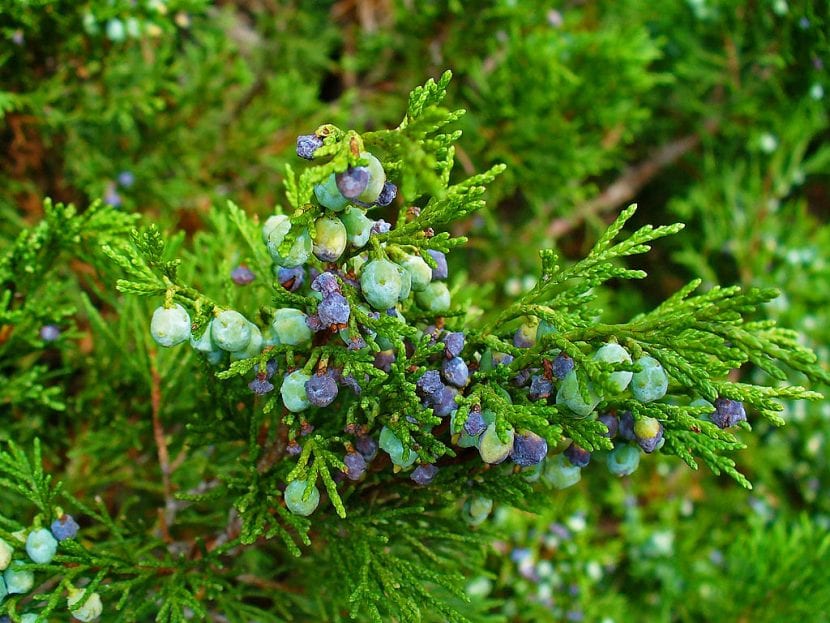
Image - Wikimedia / H. Zell
During the spring and summer months It is highly advisable to pay it with organic fertilizers, such as guano (for sale here), compost, mulch or others that we tell you in this link.
In the event that you have your creeping juniper in a pot, use liquid fertilizers following the instructions specified on the package.
Multiplication
It multiplies by seeds in springAlso in autumn if the weather is rather mild. The way to proceed is as follows:
- The first thing to do is fill a pot with universal growing medium.
- Then, it is watered consciously.
- Afterwards, copper is sprinkled on top to prevent the appearance of fungus.
- Next, the seeds are sown, leaving a separation between them of about 3cm.
- Finally, they are covered with substrate and it is watered a little again.
Placing the pot outside, in semi-shade, and keeping the substrate moist (not waterlogged), the seeds will germinate in about two or three months.
Pruning
El Juniperus sabina it could be late winter. You have to remove dry, diseased, weak or broken branches, and trim those that are getting too long. Use pruning shears previously disinfected with pharmacy alcohol or a few drops of dishwasher.
Planting or transplanting time
En spring, when the risk of frost has passed.
Rusticity
It resists frosts of up to -18ºC.
What uses does it have?
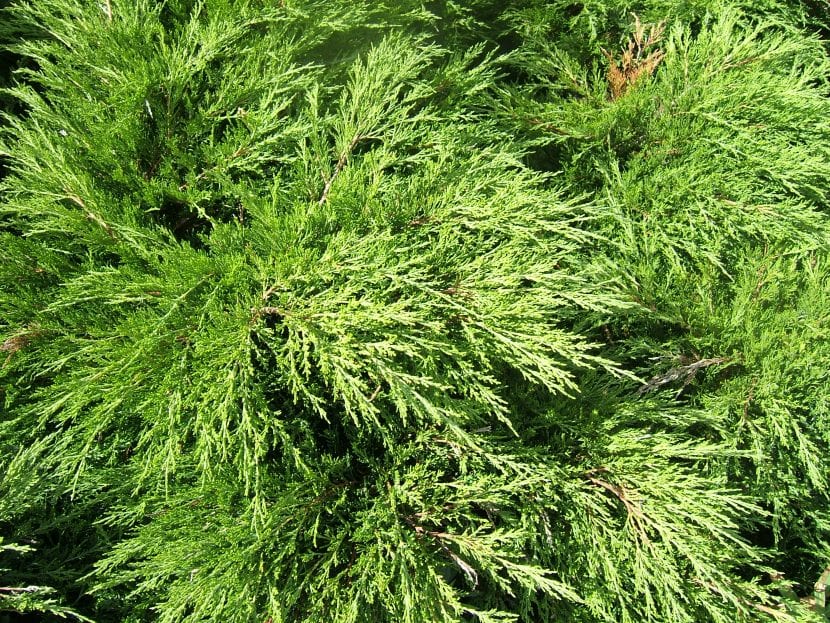
Image - Wikimedia / MPF
Ornamental
It is widely used as a decorative plant, since as we have seen it is very easy to care for and resistant. Looks great as a path or trail delimiter, or in pots. In addition, it is also a very loved species in the bonsai world.
Medicinal
It has emmenagogue properties, so in the past it was used to cause and regulate menstruation as well as abortifacient, but it is very dangerous because it contains sabinol, which is an alcohol that can cause death.
In external use, however, it is interesting for remove warts.
What did you think of the Juniperus sabina?